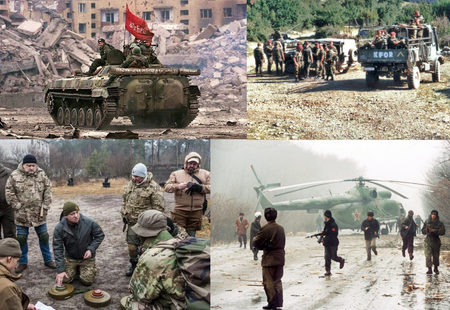Poicarian War: Difference between revisions
No edit summary |
No edit summary |
||
| Line 16: | Line 16: | ||
| {{flag|Sarvatia}} | | {{flag|Sarvatia}} | ||
| {{flag|Daekan}} | | {{flag|Daekan}} | ||
| {{flag|Drevlyana}} (until 1991) | |||
}} | }} | ||
---- | ---- | ||
Revision as of 00:22, 8 August 2023
| Poicarian War | ||||||||
|---|---|---|---|---|---|---|---|---|
 | ||||||||
| ||||||||
| Belligerents | ||||||||
|
Invasion Phase: 1990-1992 Insurgency Phase: 1992-present Supported by:
|
Invasion Phase: 1990-1992 Supported by: Insurgency Phase: 1992-present |
Invasion Phase: 1990-1992 Supported by: | ||||||
| Strength | ||||||||
|
498,010 soldiers (1992 peak) ~50,000 irregulars (2023) |
541,800 soldiers (1992 peak) 390,000 soldiers (2023) | ~20,000 irregulars and local militia (2023) | ||||||
| Casualties and losses | ||||||||
|
Invasion Phase: 1990-1992 16,541 killed and wounded ~200,000 arrested |
Invasion Phase: 1990-1992 1,904 killed and wounded |
1,201 killed and wounded ~50,000 arrested | ||||||
|
~1,500,000 civilians (estimated) ~20,000,000 refugees | ||||||||
The Poicarian War also known in Poicary as The Endless War or in the Aitic Union the Great Aitic Liberation War is an ongoing military engagement primarily between forces loyal to the Aitic Union and forces loyal to the Kingdom of Poicary. The greatest intensity of conflict occured in the years 1990 to 1992, wherein the two states fought a high intensity conflict, ended in 1992 with the signing of the October Treaty. Following the signing, which partially demilitarized the Aitic Union and ceded various tracts of land to the Kingdom of Poicary, various insurgent groups continued to operate in the ceded territory, with ongoing counter-insurgency operations continuing to this day.
Background
1990 Poicarian Coup D'etat
The 1988 Poicarian election had seen the vast popularity of the Poicarian Republican Party translate to general electoral success, winning 47% of the popular vote. The Republican Party was an anti-monarchist political party seeing de'etente with the Aitic Union and the re-opening of diplomatic relations. However without 50% of the vote, the Republican party was unable to form a ruling coalition in the multi party parliamentary system, thus led to a constitutional crisis wherein no party was able to form a government.
A vote was then set to be re-held in December of 1989, with projections expecting the Republican Party to form government amidst an ever rising tide of anti-vierz sentiment following a series of repressive measures intended to quell demonstrations in the country. A week prior to the election, a military coup overthrew the gridlocked Poicarian Parliament, establishing a military dictatorship in the country and cancelling the followup election.
Mass protests and riots began to erupt across Poicary, two months later in February, the civil unrest reached a fever pitch and the Aitic Union, seeing the collapse of the Poicarian state apparatus as inevitable, launched a full-scale invasion of the country on the 2nd of February of 1990.